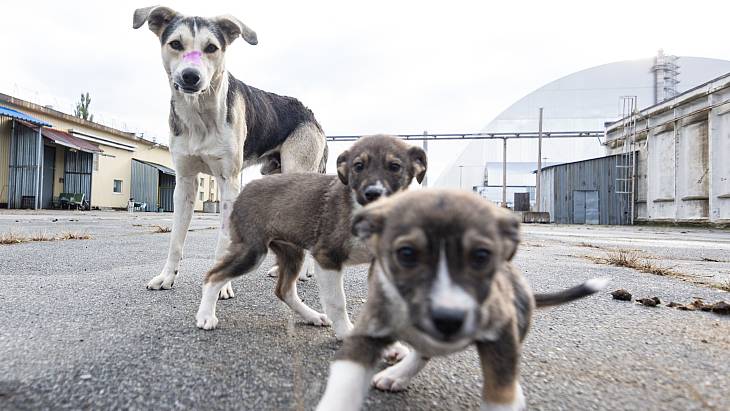The Dogs of Chernobyl project, led by US-based Clean Future Fund (CFF), began in 2017 with the aim of reducing the numbers of stray dogs by sterilising them as well as providing them with medical care.
Earlier this year the Russian military took control of the Chernobyl site for more than a month at the start of the war in Ukraine, with concerns raised about the welfare of the dogs who had got to know, and been fed by, people at the site.
Erik Kambarian, from CFF, said the latest campaign, in early October, focused on animals in the area around the New Safe Confinement, saying it had proved challenging to catch the dogs.
"The dogs in this area are apparently the smartest and most agile we have ever encountered ... they know people well and can distinguish between permanent workers and newcomers. In 2018 we even tried to dress up as employees of the Novarka company (to look like workers on the New Safe Confinement)", he said - but that failed to fool the dogs.
As well as improving the conditions and health for the dogs the aim of the project is to create safer conditions for workers at the plant and the exclusion zone.
The exclusion zone around Chernobyl has seen a wide variety of wildlife flourish over the past 35 years, largely free from human interference. When the dogs, which can can roam over wide areas, are cared for by the vets, they are checked and washed to remove any radioactive dust in their fur.
The New Safe Confinement (NSC) is the largest moveable land-based structure ever built, with a span of 257m, a length of 162m, a height of 108m and a total weight - including equipment - of 36,000 tonnes. It will make the site of the 1986 reactor accident safe and with a lifetime of 100 years will allow for the eventual dismantling of the ageing makeshift shelter from 1986 and the management of radioactive waste. The NSC is designed to withstand temperatures ranging from -43°C to +45°C, a class-three tornado, and an earthquake with a magnitude of 6 on the Richter scale.





_18570.jpg)
_16159.jpg)
_18938.jpg)
_33584.jpg)





